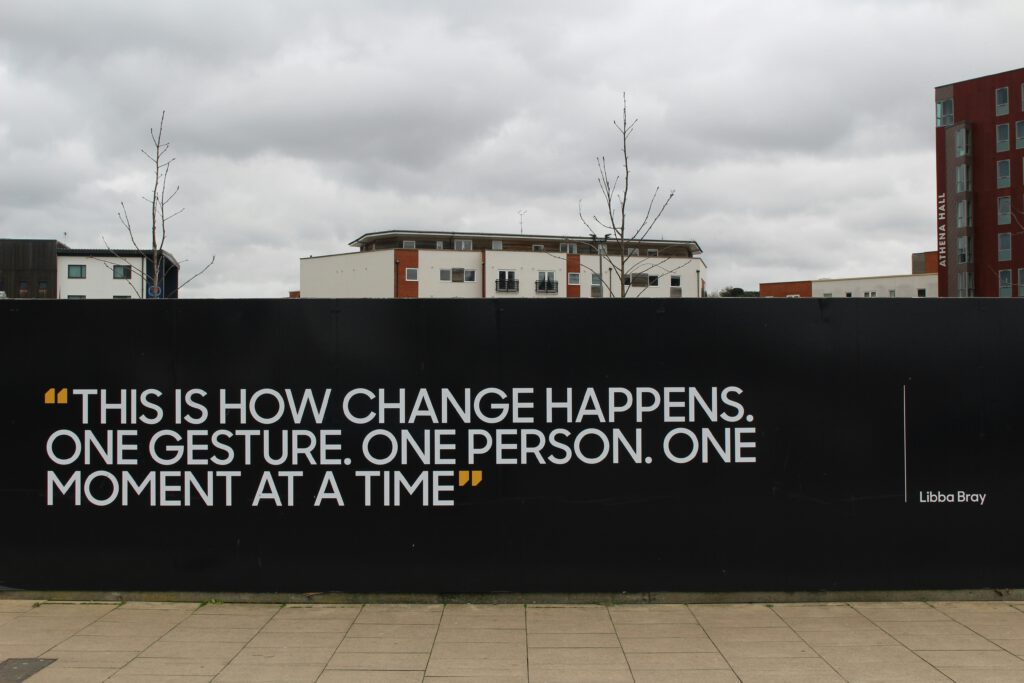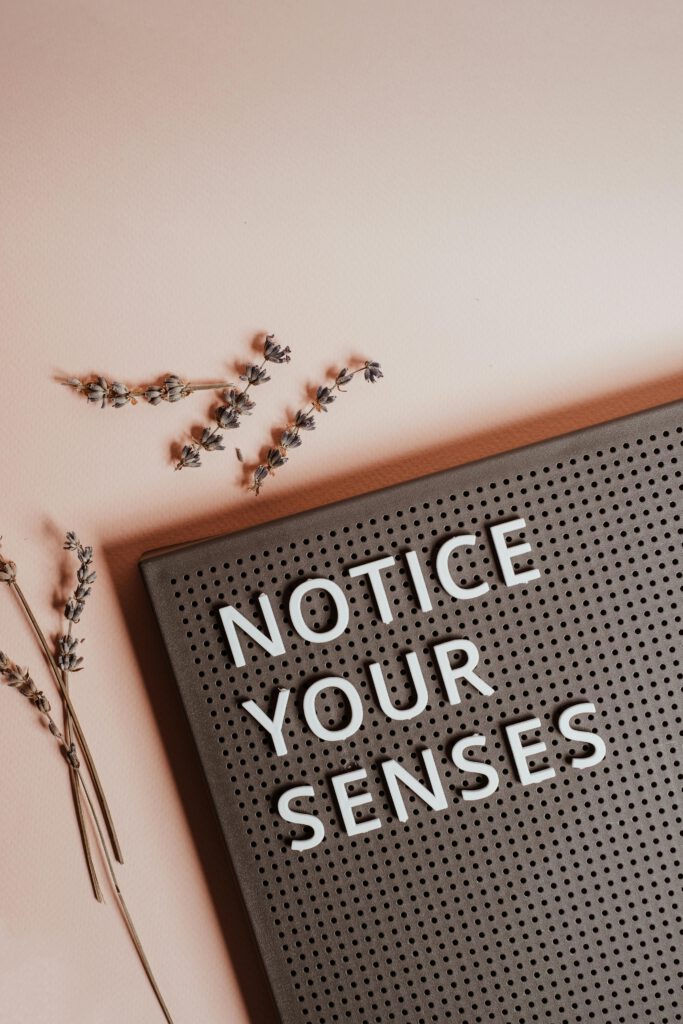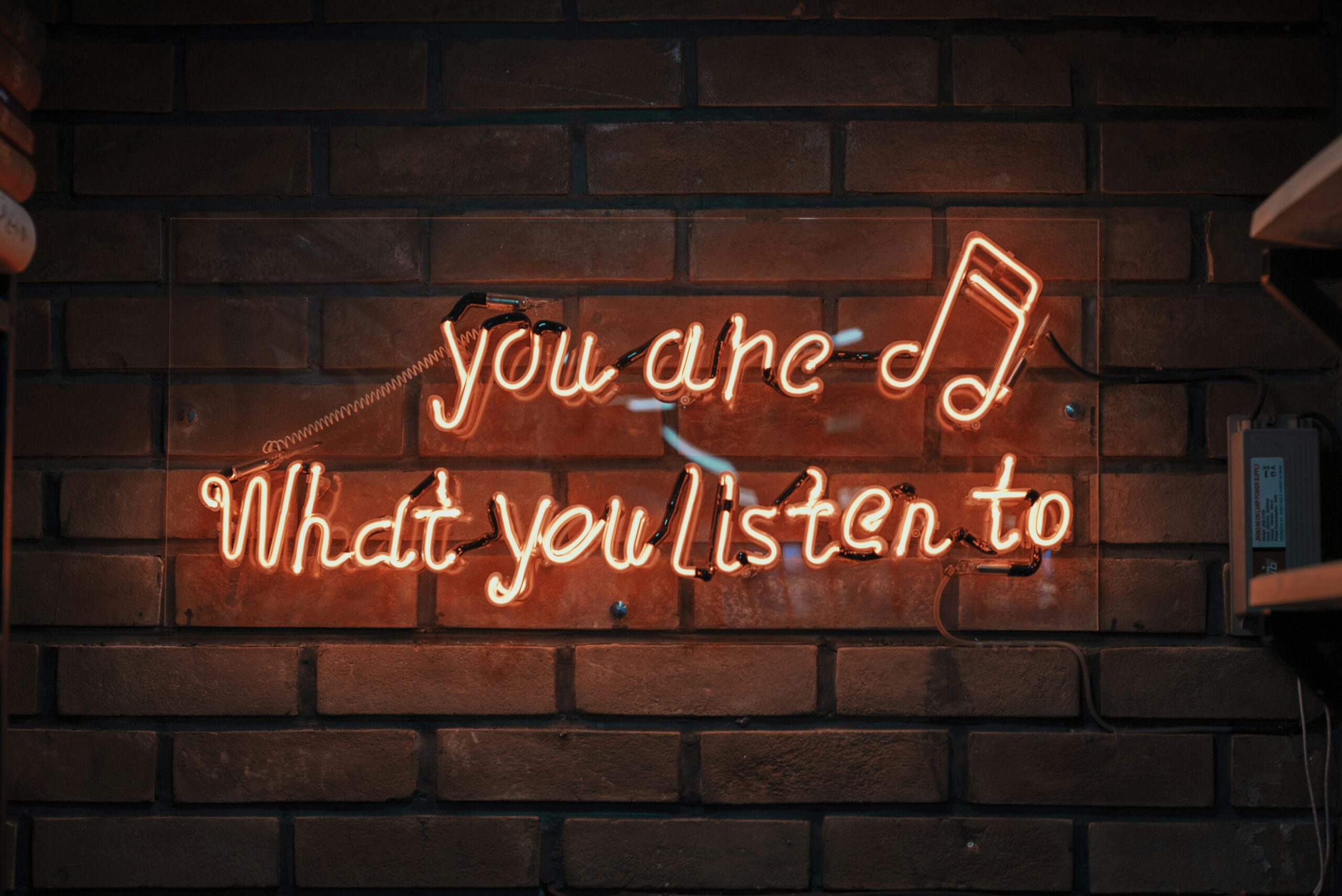Does this sound familiar? You’ve found a quiet moment—maybe in the bathroom or the car—but even in that stillness, your mind is anything but calm. Thoughts are racing, emotions are bubbling up, and the weight of everything piling on feels overwhelming.
Some days, the endless curveballs of motherhood, and life in general, make peace feel completely out of reach. Frustrations pile up, worries about the future creep in, or old resentments and regrets cast their shadows. The real issue is often the same: you’re not fully experiencing the present. Instead, your mind has drawn you into a mental storm—a collision of past and future worries, all playing out at once.
“The peace you are looking for is with you always. But you’ll never find it on the level of the mind.”
—Eckhart Tolle

Long Story Short…
This guide is filled with simple, practical tools to help you reset and find calm, no matter what life throws your way. There’s a lot of good information here, but if you’ve only managed to carve out a few moments for yourself, don’t feel pressured to read it all in one sitting, try every suggestion, or get it perfect. Just pick one or two ideas that resonate and give them a try. Even the smallest steps can make a meaningful difference.
If you’re short on time or energy, here’s the gist (links to each section are included in the list for more detailed information on each practice):
- Breathing: Slow, deep breaths—especially focusing on a full exhale—can calm your nervous system and help you feel grounded.
- Water: Staying hydrated supports both physical and emotional strength, making you more resilient to stress and overwhelm.
- Meditation: A simple meditation practice can help quiet a racing mind and bring you back to the present moment.
- Deep Relaxation: Let your body “melt” into the floor or your chair to release tension and shift from fight-or-flight to rest-and-digest mode.
- Music: The right song can lift your mood, soothe your mind, or give you a much-needed boost in just minutes.
Take your time with this guide—there’s no rush. Bookmark it, revisit the sections that resonate, and come back whenever you need a gentle reminder: peace isn’t far away. It’s already here, waiting for you.

The First Step: Recognize the Situation
The first step back to peace is recognizing this: the fact that you have time to dwell on your feelings right now means there’s no immediate crisis. In moments like these, the goal isn’t to ignore or reject how you feel, but to gently bring your focus back to what’s real—right here and now.
When emotions are running high, it’s worth remembering that our brains aren’t wired for their best work in moments of stress. When you’re emotionally activated, your brain shifts control to the amygdala—the part responsible for survival instincts—while temporarily limiting access to the prefrontal cortex, which handles problem-solving and rational thinking. In other words, we’re not operating as our most resourceful, creative selves until we’ve calmed our nervous systems. That’s why taking the time to ground yourself before tackling a problem often leads to much better outcomes (and less regret).
And yes, gently is key. Trying to “snap out of it” forcefully doesn’t work—trust me, I’ve tried. Instead, what has helped me most is relying on simple, sensory-based practices that shift my focus from the chaos happening in my mind to the calm available in my body and surroundings.
It’s easy to fall into the trap of trying to force yourself into a peaceful state, especially when emotions are intense and you’re low on time and patience, rushing for relief. But instead, approach these practices with kindness and curiosity, easing into the moment rather than demanding calm. A little patience is faster and brings more relief in the end.
You can’t build joy on a feeling of self-loathing.
—Ram Dass

The 90-Second Emotion Cycle: A Key to Your Peace
Research shows that the physiological duration of an emotion lasts only about 90 seconds—anything beyond that requires you to re-engage with the thought or feeling that triggered it.
Recognizing this can help you break the cycle of spiraling into frustration or overwhelm. These practices will guide you back to the present moment, cutting through the emotional buildup before it gets out of hand.


From Reaction to Reflection
Avoid arguing with or criticizing your emotions. Instead, observe them neutrally and let them pass. By stepping back and watching your reactions without getting caught up in them, you create space for clarity.
This clarity helps you recognize that many emotional reactions stem from outdated mental lenses—perspectives shaped by the past rather than the present. Observing rather than reacting allows you to replace those old lenses with ones that reflect your current reality, so you can approach the moment with calm and confidence.
But let’s be real—acknowledging this is one thing; figuring out how to do it is another. What’s worked best for me is simply noticing what feelings are coming up and recognizing the patterns behind them. Once I see that a reaction is part of a familiar cycle, it becomes easier to separate the situation at hand from the emotions tied to past experiences.
For example, I’ve noticed a recurring pattern when I’m feeling resentful, unappreciated, or taken for granted. Often, these feelings come up because I’ve slipped into “supermom mode”—expecting myself to operate like a machine that can go 24/7 without eating properly, getting enough sleep, or taking time to process my feelings. When I push myself too hard, I end up exhausted and frustrated, wishing the people around me could read my mind and offer support.
The truth I’ve learned (and am still learning) is this: it’s not anyone else’s responsibility to notice when I’m overextended. It’s my job to respect my own limits and advocate for my needs. The resentment I feel toward others in those moments is often a reflection of how little I’m respecting my own humanness.
And here’s the key takeaway—this realization isn’t about guilt or self-blame. It’s about self-compassion. Recognizing these patterns is an opportunity to pause, take a breath, and ask yourself what you really need in that moment. Sometimes it’s a glass of water, a quick break, or simply permission to let go of something that’s too much to handle today.
When you practice this kind of awareness with kindness, it becomes easier to move from reaction to reflection. Over time, you’ll find it’s less about “fixing” your emotions and more about listening to them, learning from them, and taking steps to care for yourself in ways that prevent those patterns from repeating.

5 Quick Practices to Recenter and Regain Clarity
These five practices have helped me countless times to find balance when life feels overwhelming. They’re quick, practical, and can be done even in the midst of chaos. They won’t just help you cope; they’ll empower you to show up as your best self—calm, clear, and grounded, even when life feels anything but.

1. Breathe
Breathing exercises are one of my go-to practices for instant relief. They’re quick, effective, and—since we all have to breathe anyway—why not make it work for you? Intentional breathing helps regulate your nervous system, lower stress, and bring your focus back to the present moment. Here are three simple methods that can fit into any situation:
Belly Breathing (Deep Diaphragmatic Breathing)
This technique is my top choice when I need to ground myself. Imagine your lower belly as a balloon. Breathe deeply into it, feeling it expand as if the balloon is inflating. Then slowly exhale, letting the “balloon” deflate completely. Focus on releasing all the air on your exhale before starting the next breath. Repeat this process for as long as needed to feel your body begin to relax.
Why it works: Belly breathing activates the parasympathetic nervous system, which helps shift your body out of “fight or flight” mode and into a calmer, more regulated state.
Box Breathing
If belly breathing isn’t comfortable, box breathing offers a simple, structured alternative. Breathe in deeply for a count of four, hold your breath for a count of four, exhale for a count of four, and hold again for four counts. Repeat as needed.
Why it works: The controlled rhythm slows your heart rate and reduces anxiety by keeping your mind focused on the counting instead of racing thoughts. It’s subtle and easy to use even in social or high-stress situations.
Simple, Intentional Breathing
Sometimes, you can’t stop everything for a full breathing exercise—maybe you’re mid-conversation or focusing on a task. In these moments, just slowing your breathing and making it more intentional can work wonders. Pay attention to fully exhaling with each breath, which naturally encourages a slower, deeper inhale.
Why it works: Even minor adjustments to your breathing can signal your body to calm down, bringing clarity and presence to your interactions.
Intentional breathing might seem small, but its impact is huge. The next time stress takes over, remember—you always have this tool at your disposal. Practice regularly: Even when you’re not stressed, practicing these techniques strengthens your ability to use them effectively in high-pressure moments.

2. Water
Water is essential for both body and mind, yet it’s easy to slip into mild dehydration without realizing it. Between the demands of daily life, we often forget to drink enough—or stay away from it on purpose because who has time for all those trips to the restroom? But even slight dehydration can leave you feeling physically weak, shaky, or fatigued, and those sensations often spill over into emotional vulnerability, anxiety, or irritability.
Rehydrating can be more than quenching thirst—it’s a way to reset. Turn drinking water, tea, or your favorite beverage into a mindful moment. Notice the feel of the liquid as you sip, the temperature contrast, or the weight of the glass in your hand. Engaging your senses while hydrating draws your focus away from racing thoughts and back to the present.
Water can also act as a sensory anchor. Running your hands under warm or cool water or splashing your face gently can help draw an overactive mind back into the present. Even routine chores like washing dishes can feel meditative when you focus on the warmth of the water, the smoothness of plates, or sound and feel of the soap bubbles popping. Adding music or deep breathing can amplify the soothing effect.
Staying hydrated and engaging with water intentionally doesn’t just replenish your body—it soothes your mind. Drinking water or interacting with it signals safety to your nervous system, helping it shift out of high alert. After all, if you have time to sit and slowly sip a glass of water, it’s hard for your brain to keep believing you’re in immediate danger. Simple acts like sipping water, splashing your face, or washing your hands can become mini resets, grounding you and helping you find clarity and presence, even on the most hectic days.
The next time you feel off balance, ask yourself: “Have I had enough water today?” Sometimes, the smallest actions make the biggest difference.






3. Meditate
Meditation is one of the most powerful tools for finding calm amidst chaos, and it can be practiced in countless ways to suit your needs and circumstances. Whether you’re seeking deep relaxation or a quick mental reset, there’s a method for you—even during the busiest or most stressful moments.
The goal isn’t to eliminate thoughts and feelings but to build awareness. The more you simply observe without judgment, the more natural it becomes. Over time, this practice changes how you respond to stress, making gentleness and presence your default approach to challenges.
Meditation doesn’t have to mean sitting cross-legged in silence. You can integrate mindfulness into your daily routine, even in seemingly mundane situations.
Sensory Meditation for Reactive Moments
When emotions run high, sensory meditation can offer a gentle way to step out of reactive thoughts. Instead of focusing on rigid structures or techniques, this approach centers on reconnecting with your body and mind through your senses—a powerful way to anchor yourself in reality when your thoughts are spiraling.
The goal is simple: reengage with what’s tangible and present. Focus on what you can feel, hear, see, smell, or even taste in this moment. For example:
- Notice the texture of the objects within your reach or the sensation of your clothing against your skin.
- Tune in to the layers of sound around you—the hum of an appliance, birds chirping, or even the rhythm of your own breath.
- Observe the fine details of your surroundings: the way light falls on a surface, the patterns on your coffee mug, or the grain of wood on your desk.
- Take a moment to inhale something pleasant—a flower (yes, stop and smell the roses!), your favorite lotion, or a comforting cup of coffee.
- Meditative walking: Pay attention to the rhythm of your footsteps, the feel of the ground beneath you, and the sounds of your surroundings.
- Mindful household tasks: Folding laundry can become meditative when you notice the warmth of clothes fresh from the dryer, the texture of the fabrics, or the subtle scent of clean linen. This is just one example, and while these tasks might not be anyone’s favorite activity, approaching them this way can make them feel less draining. Over time, I’ve found that shifting my mindset has turned these once-dreaded chores into small opportunities to pause, reset, and recharge.
Guided Meditations for Regular Practice
Guided meditations are a fantastic way to build a consistent mindfulness routine. These often include techniques like body scans or brief inspirational messages to help you center yourself. This structured approach is great for deepening your connection to inner peace and establishing a lasting habit. I’ve linked some meditation apps I’ve found helpful here (most are free).
Why It Matters: Meditation rewires your brain over time, strengthening emotional regulation and resilience. Research shows that even a few minutes of daily meditation can reduce stress, improve focus, and enhance overall well-being.
The key is to find methods that resonate with you and to embrace the small, meditative moments scattered throughout your day.
The next time life feels overwhelming, remember: you don’t need a quiet room or a perfect scenario to meditate. Your life is already full of opportunities to pause, notice, and return to the present.

4. Deep Relaxation (“Melting”)
Deep relaxation was the first practice that brought me relief from the intense panic attacks I experienced with panic disorder. I call this practice “melting” because I imagine my body turning into a puddle—my bones dissolving, my muscles softening, as I sink deeply and heavily into the floor beneath me.
Each exhale becomes an opportunity to release tension, letting my body feel heavier and more liquid with every out-breath. The firm support of the floor helps me notice areas where I might still be holding tension and invites further release.
This process isn’t just symbolic—it’s physiological. Deep relaxation sends powerful signals to your nervous system that it’s safe to let go. By relaxing intentionally, your brain receives the message that there’s no immediate danger, allowing your body to shift out of fight-or-flight mode and into rest-and-repair mode. Over time, practicing deep relaxation can lower your baseline stress levels and increase your resilience in the face of challenges.
How to Practice “Melting”
- Find a supportive surface. Lie down on a firm but comfortable surface, like a yoga mat or carpeted floor, in a quiet space where you won’t be interrupted.
- Focus on your breath. Take deep, slow inhales and even slower exhales. With each breath out, consciously release tension in your body.
- Scan for tension. Start at your head and slowly work down to your toes, noticing areas of tightness. As you exhale, imagine those areas “melting” into softness.
- Sink into the floor. Visualize your body growing heavier as if it’s merging with the ground beneath you.
In-the-Moment Modifications
While this practice is most effective lying down, it’s adaptable for situations where privacy or space is limited. If you’re sitting at a desk, in a meeting, or in the car, focus on softening your muscles one area at a time. Even just releasing tension in your shoulders, jaw, and hands while exhaling deeply can help you reset and regain a sense of calm.
Why It Works: Deep relaxation techniques like this tap into the parasympathetic nervous system, often called the “rest and digest” mode. Activating this system counteracts the stress response, lowering heart rate, blood pressure, and levels of stress hormones like cortisol. This makes relaxation practices like “melting” not just soothing but physiologically restorative.
Additional Tips:
- Try progressive muscle relaxation (PMR): If imagining “melting” doesn’t resonate with you, PMR is a structured technique where you systematically tense and then release muscle groups to achieve a similar state of relaxation.
- Pair with calming sounds or scents: Soft instrumental music, white noise, or your favorite scented candle can enhance the experience and make relaxation even easier.
Fun Family Variations
Kids often respond well to imagery, making this practice a wonderful way to help them learn self-regulation. Here are a few ideas to involve the whole family when it’s not just you in need of a reset:

Melting like ice cream: Encourage kids to lie down and pretend they’re scoops of ice cream on a sunny day, slowly melting into a delicious puddle. You can even name flavors for fun!

Becoming a puddle: Invite your child to imagine they’re a snowperson melting in the spring sunshine. Each exhale “melts” a little more snow until they’re a peaceful, happy puddle.

Puddle time for everyone: If the family is frazzled after a long day, try a group puddle session. Lie down together, maybe with soft music, and practice “melting” tension as a family reset.

5. Music
Music is one of the quickest ways to shift your mood and reconnect with the present moment. Whether you’re feeling emotionally blocked, reactive, or unmotivated, the right song can act as a reset button. A favorite tune—be it a calming instrumental, an upbeat dance track, or an old nostalgic favorite—can lift your spirits, clear your mind, or provide comfort when you need it most.
Why Music Works: Music engages multiple areas of the brain, including the auditory cortex and the limbic system, which processes emotions. This deep connection allows it to regulate your nervous system and profoundly influence your mood:
- Calming music can slow your heart rate and lower cortisol levels, helping you relax.
- Upbeat or energetic music releases dopamine, boosting motivation and happiness.
- Familiar songs evoke memories and feelings of comfort or connection, anchoring you to meaningful moments.
By engaging your emotions and senses simultaneously, music can redirect your focus away from overwhelming thoughts and guide you into the present moment.
Creating Your Own Playlist
A well-curated playlist can feel like a personal tool for emotional first aid. Over the years, I’ve built go-to playlists available here filled with songs that help me reset—whether I need a mood boost, a moment of calm, or a gentle nudge to realign with my intentions. You’re welcome to explore mine, and I hope you enjoy them! That said, I also recognize that music is deeply personal, so I encourage you to create your own playlists with your favorite comfort songs. Having them ready at a moment’s notice can make all the difference in navigating life’s ups and downs.

A Reminder to Keep Persevering
Early on in my search for relief from panic attacks, I came across an anxiety support group online. One day, I stumbled on a quote from a long-inactive user that stopped me in my tracks:
“I’m beginning to see that you just can’t chase after peace and expect that to work. It’s already here if you can just stop chasing after it. If I can just come to accept that life is uncertain, ever-changing, then I can clearly see the futility of my attempting to control it.” —Unknown
Those words stuck with me. I remember wishing that user had come back to share more—she clearly had started to grasp something profound. Then it hit me: she didn’t need to come back. She had found her way and moved on, no longer relying on the group for support. That realization was just as inspiring as her words. It reminded me not to give up on the hard days and to trust that, with continued practice, this understanding would eventually move from being an intellectual concept to something I could truly embody as well.
Her insight still resonates deeply: letting go of control is how we find peace. When we stop chasing it, we make room to experience life as it is—messy, unpredictable, and still somehow full of meaningful and peaceful moments.
Progress doesn’t happen overnight, but it happens. The little choices—pausing for a mindful breath, softening in a tough moment, looking at a challenge in a new way—stack up into big changes. It’s not about being perfect; it’s about showing up for yourself, one small step at a time.
So, when the hard days come, remember this: you’re building something meaningful, piece by piece. Peace isn’t out there somewhere, waiting to be caught. It’s already here, just waiting for you to notice it.
“Realize deeply that the present moment is all you ever have. Make the Now the primary focus of your life.”
—Eckhart Tolle

Which of these practices have brought you relief? Do you have your own take on finding calm in the chaos? I’d love to hear what’s working for you. Feel free to share your tips in the comments or reach out to me through the contact page.
Eventually, I’ll be adding a section for shared stories from the MomBalm community—carefully selected and edited to highlight the ideas and experiences that have brought more meaning and balance to the lives of our community members. My goal is to create a space where we can learn from one another and share our collective wisdom to support and uplift each other. So, if you have a story, tip, or insight that you think could help another mom, I’d love for you to send it my way!


Leave a Reply